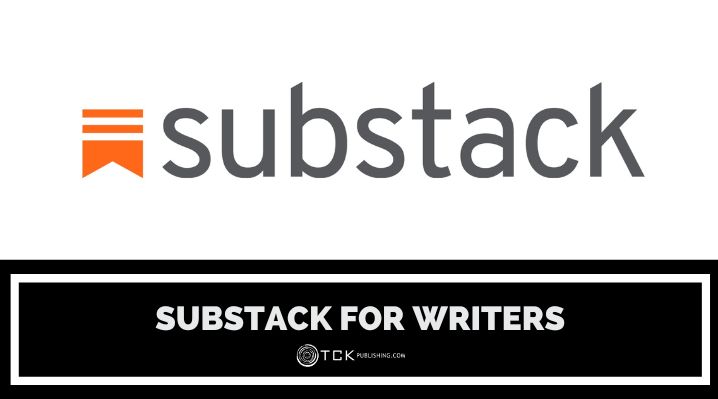
Substack, a platform specializing in newsletters, has been gaining plenty of attention in recent years. More specifically, many writers call it the next big thing if you want success and fame.
But what’s the reason for this popularity? Are people simply tired of the usual networks, or does Substack offer something they can’t? Yes and no.
What is Substack?
Substack is an online, subscription-based platform that lets you publish newsletters. It’s easy to use and doesn’t require you to maintain a tech stack (a combination of technologies used to build and maintain a website, application, or newsletter). You simply sign up and start publishing.
Many of its users are in the writing industry, particularly journalists. Many hobbyists, subject-matter experts, and thought leaders also use it to distribute content to their audience.
There are a lot of platforms out there where a writer can create, share, and earn from their work. However, Substack offers plenty of unique features that make it enticing to many.
Some prominent people who use Substack are:
- Heather Cox Richardson
- Chuck Palahniuk
- Margaret Atwood
- Kareem Abdul-Jabar
- Matthew Yglesias
- George Saunders
- Glenn Greenwald
- Alison Roman
- Stephen Fry
How You and Substack Earn Money
Normally, a free-to-use platform like Substack would have advertisements to generate revenue. However, Substack doesn’t accept advertisers nor is it interested in diverting your attention to advertisements.
As their website states, rather than charge you a fee, Substack only earns money when you earn money. Paid subscriptions start at $5/month and can go all the way to $75/month. On average, you get to keep 86% of the profits, with Substack taking 10-14% for their cut and payment processing fees.
That’s a lot considering Amazon, a far larger platform, takes a minimum of 30%. With such competitive pricing, writers can earn well even with just a few hundred subscribers.
Pros of Substack
Like all platforms, Substack has advantages and disadvantages that you need to know. Below are features that are either unique to the platform or that it excels at.
No Advertisements
As stated, Substack doesn’t like advertisers. They’d rather have people focusing on your valuable content instead.
It makes sense because their business model means the more your newsletter grows, the more revenue they get. This means your goals and theirs will always be aligned.
It also makes for an enjoyable experience. You can be a more independent creator who doesn’t need to cater to advertisers to earn money and your readers don’t have to deal with intrusive ads.
Email-centered
Substack is a newsletter service at its core. Everyone has email and is therefore reachable.
Remember, your newsletter subscribers are your most valuable audience. They’re the ones who are most likely to engage with your content and avail of your services and products.
This also means your content goes directly to your subscriber’s inbox. They don’t have to search for you, you just need to publish consistently so they don’t forget you or unsubscribe.
Reduced Tech and Tool Stack
Normally, setting up a newsletter means building a tech and tool stack that makes it functional. A typical one has all of these:
- A content management system to publish content.
- An email service provider to send your newsletter.
- A subscription management provider to manage subscriptions.
- Audience analytics
- A mail tester for checking the spamminess of your emails.
- Google docs
- Canva and Photoshop for graphics
Compared to that, Substack provides many of these functions in-platform. Think of it as a combination of an email, blog, podcast, and RSS feed. You only need to learn how to use it well.
This is especially useful for a beginner. You don’t get overwhelmed by the tech or have to pay a large amount of money for individual services.
Easy to start and use
Substack is straightforward to set up. Once you’ve got an account, you can customize it to your preference. And if you have an existing subscriber list, you can either add it manually or import it to Substack using a CSV file.
The dashboard is also simple and intuitive. Everything is laid out for you to quickly understand and use. It’s easy to embed links, add images and videos, and pull quotes.
You own your content and mailing list
You own anything you publish on the platform. You also have access and power over your audience. You can bring both with you if you ever decide to leave the platform. The only thing you can’t bring is your readers’ credit card information—and that’s a great thing!
Cons of Substack
The cons here are more in the gray area rather than actual cons. However, they are things you need to consider seriously before starting your Substack journey.
Loose approach to censorship
Substack is almost hands-off in terms of content moderation. Instead, the platform encourages you to set your standards for your community. This also means readers can choose which communities they want to be part of.
While this loose censorship is generally great for the platform, it has also caused issues. Many have criticized Substack due to its “tolerance” for views and opinions considered extremist and problematic. This includes Nazis, people who spread medical misinformation, and conspiracy theorists.
Substack does have content guidelines that include the usual prohibition of hate speech, illegal activities, porn, and scams. However, they still maintain minimal censorship.
Not as powerful as individual services
Substack has plenty of valuable and user-friendly tools. However, these tools may not be as powerful as others you can get individually.
Substack’s features are designed for a general use case. If you’re looking for something more specific or in-depth, you might need to check other tools.
For example, you can personalize emails on ConvertKit and Beehiiv because you have the option to ask for their name and other information. Substack only allows you to ask for a subscriber’s email.
No canonical links
Bots called web crawlers regularly “crawl” the internet so they can index web pages and include them in search engine results. These search engines can detect duplicate content.
Now, you might want to publish your content on different sites. That’s okay! You can use a canonical link to indicate that your content on one platform was already published on another platform. It tells the bots where to find the original.
But Substack doesn’t allow you to set canonical links. This is on purpose—they want to be the first platform you publish on. This way, they’ll be ranked higher than other platforms.
If you want to publish on multiple sites, you’ll have to do it on Substack first and then add canonical links to the other sites.
Competition
There’s a lot of competition on Substack. Its discoverability function also isn’t great, though they are working on it. It’ll be hard to get premium subscribers unless you already have a following.
Tips on Getting Subscribers For Your Newsletter
Here are a few general tips to help you build up your audience.
- Offer people a solid selection of free content. Make them think “If your free content is already this good, how much better will your premium content be?”
- Don’t limit yourself to Substack. Use multiple platforms and cross-promote. Pick a few you can reasonably manage and work well with your intended purpose.
- Strategize your content. Writing and publishing won’t get you to where you want to be. You need to learn how to market your work.
- Include call-to-action prompts. Remind people you have more and better quality content they can check out.
- Engage with related posts and interact with other writers. Build your community by being part of one. Substack Notes—the platform’s way of sharing short-form content that’s similar to Twitter—is a great way of doing this.
Is Substack Worth It?
Substack offers you a lot of value. Most significantly, it simplifies content creation for both beginner and veteran writers. It is easy to use, reduces your tech stack, is customizable, creator-friendly, and free!
It is definitely worth checking out; just don’t think of it as your easy answer to fame and fortune. You need to put in the work. Be consistent in putting out quality content, have a content plan, and build lasting relationships with your audience and other creators.
Would you use Substack as a writer? Share your thoughts in the comments below!
If you enjoyed this post, then you might also like:
- Facebook for Authors: How to Use an Author Page
- Instagram for Writers: Tips for Developing Your Social Media Presence
- 7 Social Media Strategies Authors Use to Sell More Books
- 9 Best Social Media Management Tools for Writers, Bloggers, and Businesses

Cole is a blog writer and aspiring novelist. He has a degree in Communications and is an advocate of media and information literacy and responsible media practices. Aside from his interest in technology, crafts, and food, he’s also your typical science fiction and fantasy junkie, spending most of his free time reading through an ever-growing to-be-read list. It’s either that or procrastinating over actually writing his book. Wish him luck!
